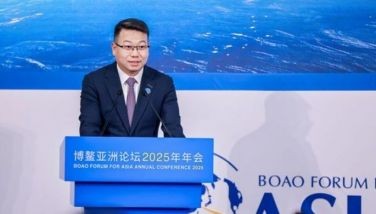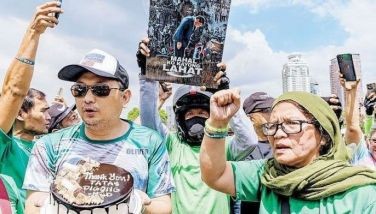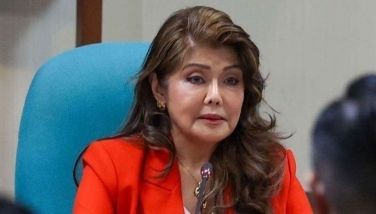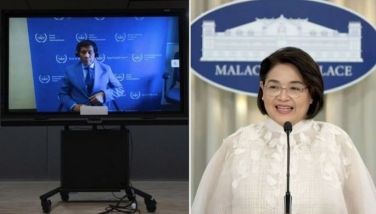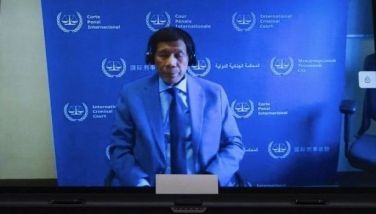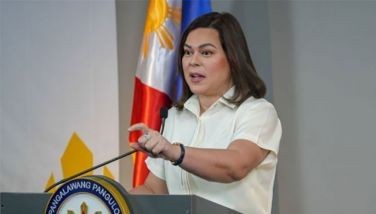29 interesting facts about the EDSA revolution
February 25, 2015 | 11:36am
MANILA, Philippines – Did you know that yellow is not really the favorite color of the late President Corazon Aquino? According to her interview in TIME, her favorite color was actually red. It was only when some friends suggested the song “Tie A Yellow Ribbon” for Ninoy’s homecoming that she developed a fancy for the color.
In line with the 29th anniversary of the historical EDSA revolution, here are 29 EDSA-related facts:
- “People Power Revolution” is also tagged as the “EDSA Revolution,” “Yellow Revolution,” “Bloodless Revolution” and “1986 Philippine Revolution.”
- Despite the presence of tank-riding soldiers and big guns, not a single shot was fired. Thus, People Power Revolution was the first nonviolent, bloodless revolution that ever took place.
- It was not only in 1986 that there had been a mass gathering on EDSA. There was another massive gathering in which media commonly tags as EDSA 2 (EDSA Dos) on January 2001, which ousted then-President Joseph Estrada.
- Since Ninoy’s assassination, yellow has been the color of the revolution.
- “Tie a Yellow Ribbon” was Ninoy’s comeback song. Because he was assassinated upon walking off the plane, the Filipinos took their cue from the song and since then used color yellow as their symbol of rebellion.
- Corazon Aquino was hesitant to go against Ferdinand Marcos for the snap elections. To encourage her make the decision, 1 million signatures of Filipinos urging her to plunge into the political arena was presented to her.
- The official tally of the votes did not come together during the snap elections. To be exact, the official election canvasser, the Commission on Elections (COMELEC), declared Marcos the winner with 10,807,197 votes against Aquino's 9,291,761 votes while National Movement for Free Elections’s (NAMFREL) had Aquino winning with 7,835,070 votes against Marcos' 7,053,068 points.
- Ninoy’s widow Cory Aquino was not in EDSA during the entire revolution. She was in Cebu, conducting her own protests.
- Defense Minister Juan Ponce Enrile’s move on February 22 to take over the Defense Ministry at Camp Aguinaldo with hundreds of pro-Aquino protesters was seen as the first action of the People Power revolution.
- Fidel Ramos, after being contacted by Enrile joined him in a press conference in Camp Aguinaldo and announced their resignations and defection to the opposition. They also announced that blatant fraud took place during the elections. “I would like to appeal to the fair and to the dedicated and people-oriented members of the AFP and the INP to join us in this crusade for better government, “ he said during the conference.
- Cardinal Sin was the one who led the Catholic Church’s participation in the revolution.
- It was only after Cardinal Sin’s announcement in Radio Veritas that thousands of people, responding to the Cardinal’s appeal, began gathering outside rebel camps, bringing supplies and food for the soldiers.
- Radio Veritas was the only radio station which covered events that government-owned stations didn't.
- Armed soldiers destroyed Radio Veritas’ transmission tower, cutting off all news of the rebellion.
- When General Artemio Tadiar warned the crowd that he would open fire if they don’t disperse, people responded by singing, "Bayan Ko," praying and offering soldiers cigarettes and bread.
- The L hand symbol (done by extending the thumb and the index finger pointing up) means "laban" (to fight). It was the eminent hand gesture of protesters during the revolution.
- Aside from wearing yellow clothes and tying yellow ribbons on trees and posts, phone directories (which is color yellow) were ripped apart on demonstrations and were used as confetti.
- Performers like the APO Hiking Society staged mini-concerts during the revolution.
- “Bayan Ko” and “Magkaisa” are among the iconic songs during EDSA Revolution. The latter was composed by now senator Vicente Sotto and was sung by Virna Lisa Loberiza. Other than during the EDSA revolution, the song was also sung during the funeral of senator Aquino.
- There were two inaugurations held on Feb. 25, 1986. Marcos held his in Malacañang while Aquino held hers in Club Filipino.
- After hearing the news that Marcos had already abandoned the palace, Fidel Ramos was the one who announced to the thick crowd the good news, while jumping with joy. Up to now, the jumping he did is still symbolic in EDSA celebrations.
- After Marcos and his family left the country, people marched inside the palace. People wandered around and saw the luxury of Marcos. Some reports claim that there have been looting occurrences, too.
- The whole world rejoiced with the Filipinos. In fact, Bob Simon, an anchorman at CBS said, "We Americans like to think we taught the Filipinos democracy. Well, tonight they are teaching the world."
- On the day Marcos and his family departed the country for exile in Hawaii, Corazon Aquino was inaugurated as the 11th and the first female president of the Philippines.
- One of Aquino's first and boldest moves was the creation of the Presidential Commission on Good Government (PCGG), which was tasked to go after the Marcos ill-gotten wealth.
- "Handog ng Pilipino sa Mundo" was composed by songwriter Jim Paredes two months after the revolution.
- Epifanio de los Santos Avenue (EDSA), where the EDSA revolution took place previous names include North-South Circumferential Road, Avenida 19 de Junio (June 19 Avenue), Highway 54. Contrary to what most people believe, EDSA is not 54 kilometers long, but only 24.
- EDSA Shrine or the Mary Queen of Peace Shrine was constructed in honor of the Virgin Mary to give thanks for the peaceful EDSA revolution. It was completed three years after the revolution.
- People Power Monument, which was also built to commemorate the event was then built seven years after the revolution, on 1993. It is located at the corner of EDSA and White Plains Avenue, less than a kilometer away from the EDSA Shrine.
Sources: Philippinehistory.org, Mtholyoke.edu
BrandSpace Articles
<
>
- Latest
Latest
Latest
March 8, 2025 - 3:43pm
By Jing Castañeda | March 8, 2025 - 3:43pm
March 1, 2025 - 10:00am
By Venice Isabelle Rañosa | March 1, 2025 - 10:00am
February 22, 2025 - 5:26pm
By Rupert Paul Manhit | February 22, 2025 - 5:26pm
February 15, 2025 - 9:00am
By Joyce Ilas-Reyes | February 15, 2025 - 9:00am
February 11, 2025 - 6:32pm
By Nikki Coseteng | February 11, 2025 - 6:32pm
February 10, 2025 - 10:00am
By Nikki Coseteng | February 10, 2025 - 10:00am
Recommended













